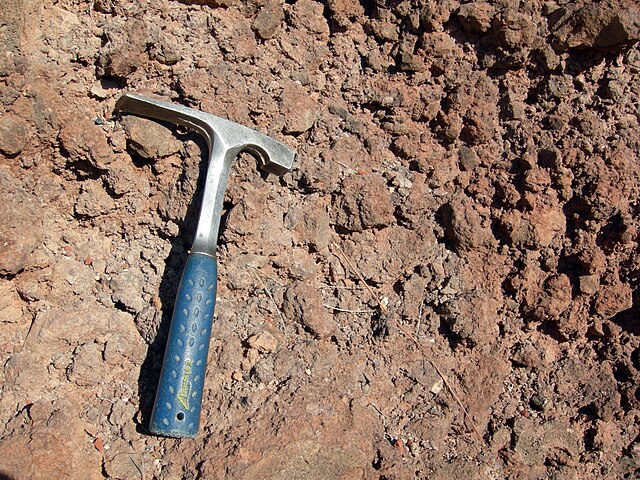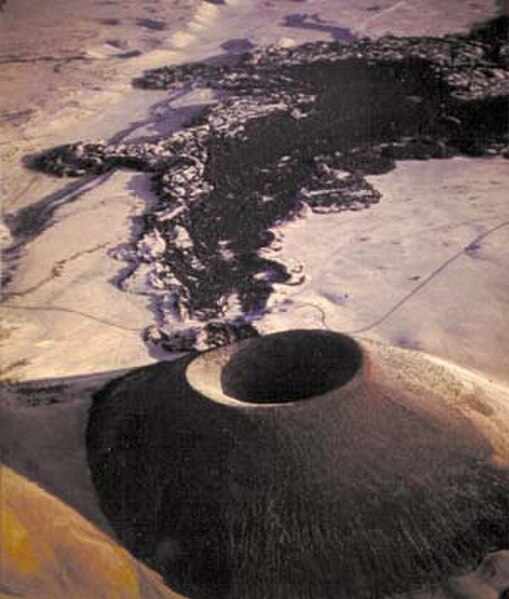Parícutin is a cinder cone volcano located in the Mexican state of Michoacán, near the city of Uruapan and about 322 kilometers (200 mi) west of Mexico City. The volcano surged suddenly from the cornfield of local farmer Dionisio Pulido in 1943, attracting both popular and scientific attention.
Parícutin in 1994
Parícutin in 1997
Parícutin from Las Cabañas
View of the volcano from the town of Angahuan
A cinder cone is a steep conical hill of loose pyroclastic fragments, such as volcanic clinkers, volcanic ash, or scoria that has been built around a volcanic vent. The pyroclastic fragments are formed by explosive eruptions or lava fountains from a single, typically cylindrical, vent. As the gas-charged lava is blown violently into the air, it breaks into small fragments that solidify and fall as either cinders, clinkers, or scoria around the vent to form a cone that often is symmetrical; with slopes between 30 and 40°; and a nearly circular ground plan. Most cinder cones have a bowl-shaped crater at the summit.
Cross-section diagram of a cinder cone or scoria cone
Cinders at a cinder cone in San Bernardino Valley, Arizona
SP Crater, an extinct cinder cone in Arizona
Sunset Crater, a young monogenetic cinder cone in Arizona that began forming around the year 1075 CE








